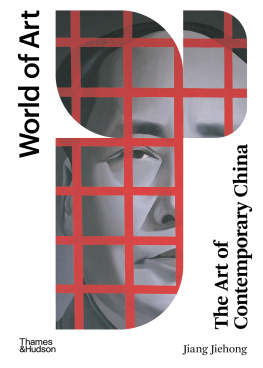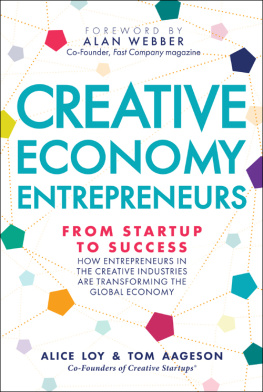First published in the UK in 2020 by
Intellect, The Mill, Parnall Road, Fishponds, Bristol, BS16 3JG, UK
First published in the USA in 2020 by
Intellect, The University of Chicago Press, 1427 E. 60th Street,
Chicago, IL 60637, USA
Copyright 2020 Intellect Ltd
All rights reserved. No part of this publication may be reproduced, stored in a retrieval system, or transmitted, in any form or by any means, electronic, mechanical, photocopying, recording, or otherwise, without written permission.
A catalogue record for this book is available from the British Library.
Copy editor: Newgen
Cover designer: Aleksandra Szumlas
Production editor: Tim Mitchell
Typesetting: Newgen
Paperback ISBN 9781789382303
Hardback ISBN 9781789383218
ePDF ISBN 9781789382327
ePUB ISBN 9781789382310
Printed and bound by TJ International, UK.
To find out about all our publications, please visit
www.intellectbooks.com
There you can subscribe to our e-newsletter,
browse or download our current catalogue,
and buy any titles that are in print.
This is a peer-reviewed publication.
To our fathers, Dennis OConnor and Gu Genfa
We would like to thank all those who have seen parts of this book and have given us their comments. We are grateful to Kate Oakley, who read a version when its coherence was slightly more than slime mould, and to Seb Olma and David Hesmondhalgh, whose early enthusiastic comments have kept us going. Laikwan Pangs generous comments on Shanghai Modern were very much appreciated too. Heartfelt thanks to Elena Trubina, who managed to read some of the most convoluted and turgid drafts, even commenting on them. We would also like to thank Julian Meyrick, for his keen editorial insights, and Declan Martin, who did the grunt work on the footnotes.
We are indebted to the Shanghai Jiaotong University, which has hosted our Shanghai City Lab for six years, and especially to Professor Shan Shilian and Associate Professor Wen Yuan. Not forgetting Professor Wang Jie, now at Zhejiang University, who made first contact. Thanks to Li Yan, at Sichuan Normal University, for many statistical insights, and to Ma Da at Creative 100, who allowed us an inside view. Conor Roche in Shanghai kept us up to date with insight and conversation.
Thanks to the Universities of Monash and South Australia, for giving us the space and time to develop and write this book, and to the Australian Research Council, for their patience in getting outputs from two grants: DP150101477: Working the Field: Creative Graduates in China and Australia, and LP0991136: Soft Infrastructure, New Media and Creative Clusters: Developing Capacity in China and Australia.
The creativity moment
This book emerged from an encounter between China and the West around three interlinked concepts culture, creativity and modernity. More specifically, the books point of departure was the arrival in China, in 2005, of a Western discourse of creativity, primarily framed as creative industries or creative economy. This new term was coined by the UK New Labour government in 1998, towards the end of a decade in which the West had won the Cold War, and had extended the global market, along with its regulatory and ideological apparatuses, to all but a few obdurate backwaters. Though taking flight from a context specific to the United Kingdom, the creative industries soon gained global traction (though with important exceptions). It identified a new economic sector, rooted in culture and utilizing the human capital of talent and creativity things all countries possessed as abundant natural resources. But the creative industries were part of a broader imaginary, of a different future in which social, cultural, economic and perhaps political change would be driven by creative and innovative individuals working outside the existing cultural and socio-economic hierarchies. The creative industries became intertwined in the popular imaginary with the new dot-com digital revolution, where ideas, technology and entrepreneurship had disrupted the incumbency of the corporate dinosaurs. It seemed that creativity, confined to the world of art and culture during the Fordist age of planning, corporations and mass consumption, was now to be made available across the social landscape. After a period since the mid-1970s in which industrial modernity seemed to have migrated to the East, creativity opened up a new modernity in which the West would again take the lead and set the standards.
The creative imaginary was rooted in a powerful economic rationale. Building on the idea of the information and knowledge economy, which had been variously formulated in the 1960s and 1970s as the next stage of capitalism, creativity represented a widening of this economy to include the kinds of knowledge and skills which had traditionally been associated with culture and the arts. Creative production and consumption, turbo-charged through new communications and information technologies, and through expanding spending power, education and leisure time, became a growth sector in its own right. It provided new skilled jobs and generated wealth distributed as wages, profits and taxes. Yet its economic benefits extended beyond this growth into multiple spill overs across the economy. In the form of the creative economy, creativity would act as a new kind of innovation system with complex catalytic effects across all sectors. Indeed, highly visible spaces of creative intensity in cities the various official and unofficial creative quarters, or even one or two trendy caf zones could act as synecdoche for the wider creativity of the city. In the imaginary that surrounds the creative economy, a new kind of society, a new kind of modernity can be glimpsed.
In this way, a new phase of economic growth was to call on forms of subjectivity which had previously been outside of, or even oppositional to, the economy. Aspects of subjectivity linked to the emotions, spirituality or the specific qualities of the senses that were traditionally associated with art and culture, were now to be called upon. Since the eighteenth century, these had been excluded from what we might call the techno-rational-administrative systems of modernity. This involved the separation of the economic from ethical, customary and cultural systems of society within which it had been encased, a process noted by Karl Marx, Max Weber, Karl Polanyi and Fernand Braudel amongst others. Indeed, it was the ability to isolate the economy from these wider social systems, at the level of the polity as well as the individual subject, that had been the very mark of the modern person and modern administration. The system of industrial Fordism, and the sociopolitical settlement with which it was associated, further removed these emotional, spiritual and aesthetic elements to a place separate from its rational-bureaucratic structures. Now, it was claimed, a new round of economic development would put creativity at its core, folding these excluded forms of experience into its post-industrial imaginary.







